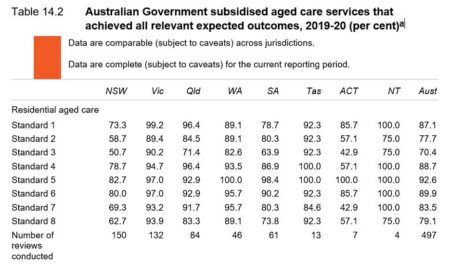THERE are eight standards in aged care in Australia. These apply in both nursing homes and in your own home if you have a Home Care Package.
You can split these eight standards into two categories. One category contains standards you might call personal. The other contains standards you might call corporate.
Personal standards are Consumer dignity and choice (Standard 1), Personal care and clinical care (Standard 3) and Services and supports for daily living (Standard 4). These standards are about what care you get.
Corporate standards are about how a nursing home goes about making sure it meets those personal standards. Ongoing assessment and planning with consumers (Standard 2), Organisation’s service environment (Standard 5), Feedback and complaints (Standard 6), Human resources (Standard 7) and Organisational Governance (Standard 8) are about the processes necessary to make sure the resident has dignity and choice, receives good personal and clinical care and is well-supported in their daily lives.
The Productivity Commission, which puts out a report on Government services each year, published a curious table of how aged care providers were doing against those eight standards.
It turns out that only 70.4 per cent of aged care providers meet the Personal care and clinical care standard, while 84.5 per cent are meeting all the corporate standards, which are there to ensure good personal and clinical care.
How can this be?
It means that 14.1 per cent of providers are really good at doing corporate stuff but incompetent at doing what matters, providing good personal and clinical care.
That 14.1 per cent is on top of the providers who are lousy at corporate processes as well as lousy at providing good personal and clinical care.
Yet, another take on this is that these eight aged care standards are not worth the paper they are written on. How can a Government assessor come to the conclusion corporate processes are good when they produce a bad outcome?
